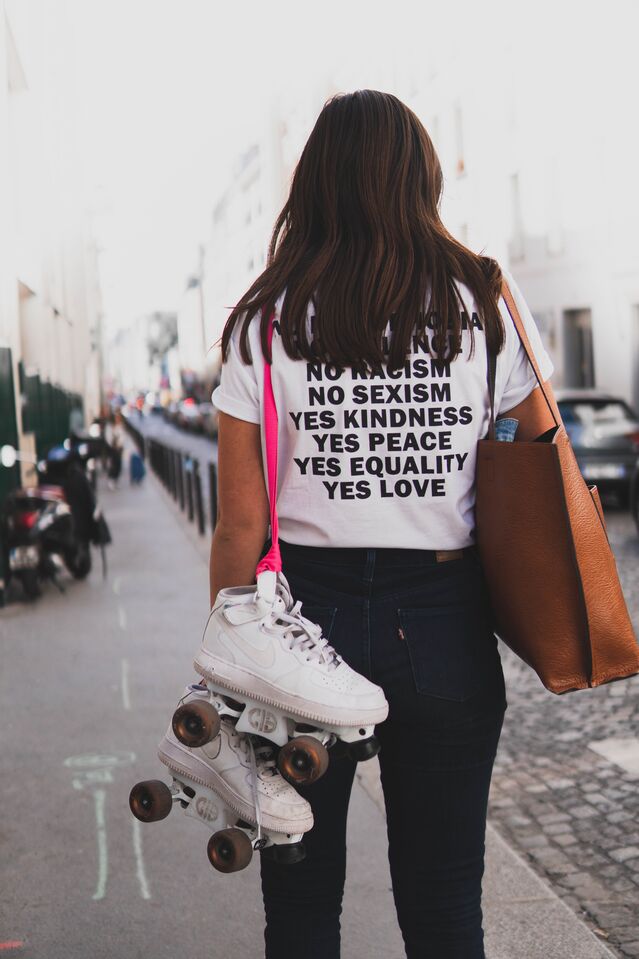Gender
Gender Inequality Fuels Intimate Partner Violence
A study found that gender equality reduces violence toward women.
Posted July 5, 2022 Reviewed by Abigail Fagan
Key points
- American culture often encourages sexism and misogyny, placing women at risk of violence.
- Violence toward women is lower in countries where more gender equality is evident.
- By addressing sexist and misogynist beliefs and achieving gender equality, violence toward women will change for the better.

Every month, an average of 70 women are shot and killed by an intimate partner. (CDC, updated Jan 2022)
“Men who kill women do not suddenly kill women, they work up to killing women.” (Perez, 2019)
Although women can be abusive partners as well, the majority of domestic violence is committed by men. Our culture of sexism inherently teaches males from inception that they are expected to be in control (Kippert, 2021). The male use of coercion can precede violence and show up in dating and eventually intimate relationships. Coercive behavior becomes difficult to identify when it’s embedded in the culture, yet, at the same time, it meets the criteria as harmful psychological and emotional abuse. Our culture puts women at risk for violence just for being female.
Sexism vs Misogyny
Misogyny is on the darker end of sexism. Sexism is prejudice or discrimination against one sex. Misogyny is a more severe reaction of contempt and hatred of women that shows up in sex discrimination, patriarchy, male privilege, belittling and disenfranchising women, sexual objectification, and violence against women. (Kippert, 2021).
Defining Intimate Partner Violence
According to the United Nations, domestic violence or intimate partner abuse can be defined as a pattern of behavior in a relationship that is used to obtain and maintain power and control over an intimate partner. Abuse can be physical, sexual, emotional, economic or psychological actions or threats of actions that impact or influence another person. This includes any behaviors that intimidate, frighten, terrorize, hurt, manipulate, humiliate, blame, injure, or wound someone. Domestic abuse can happen to anyone of any race, age, sexual orientation, religion, or gender. It can occur within a range of relationships including couples who are married, living together or dating. Domestic violence affects people of all socioeconomic backgrounds and education levels.
Statistics of Intimate Partner Violence
According to the Centers for Disease Control and Prevention, the following are rates of reported intimate partner violence:
- Nearly half of all female homicide victims are killed by a current or former male intimate partner.
- The most dangerous time for a victim of domestic violence is when she or he leaves the relationship.
- Women in an abusive relationship are five times more likely to be killed if their abuser has access to a firearm.
- Domestic violence assaults involving firearms are 12 times more likely to result in death than those involving other weapons or bodily force.
These statistics reveal an alarming rate of danger one can potentially encounter as a woman in the United States with an intimate partner.
Gender Inequality Fuels Domestic Violence
Holding the abuser responsible for the harm caused is important, yet it doesn’t address the larger conditions that perpetuate misogyny and violence toward women. A 2015 study from The Lancet found in their analysis of data that gender inequality “serves as a key driver in women's individual risk of violence and provides insight into why prevalence of intimate partner violence varies across countries.” Moving toward gender equality in our culture can reduce violence against women.
Gender Equality Protects Women
We can all make a difference in changing sexist and misogynist beliefs for the next generation and more to come. Men and women in our culture—those who internalize and then perpetuate sexist and misogynist beliefs and practices—can provide important influences of reform if we make it a priority. Reversing sexist beliefs needs to occur during childhood. Both parents, and men in particular, are in a powerful position to help. “It’s not enough to intellectualize. There needs to be action. [Men] need to begin acknowledging the truth, understanding and accepting it. Yes, I have been sexist. Yes, I have degraded women. And I’m working on it. That’s how we promote change.” (Kippert, 2021).
For intimate partner violence support and resources please contact The National Domestic Violence Hotline. To find a therapist, visit the Psychology Today Therapy Directory.
©Lambert
References
Falb, K., Annan, J., & Gupta, J. 2015. “Achieving gender equality to reduce intimate partner violence against women.” The Lancet. Vol 3, Issue 6.
Kippert, A. 2021. “What Fuels Domestic Violence? Part 2: Misogyny.” DomesticShelters.org article.
Perez, C. 2019. Invisible Women: Exposing Data Bias in a World Designed for Men. New York: Abrams.


